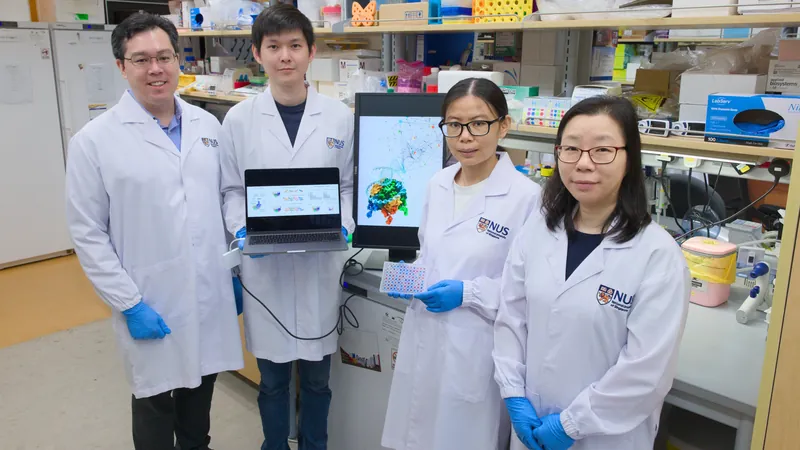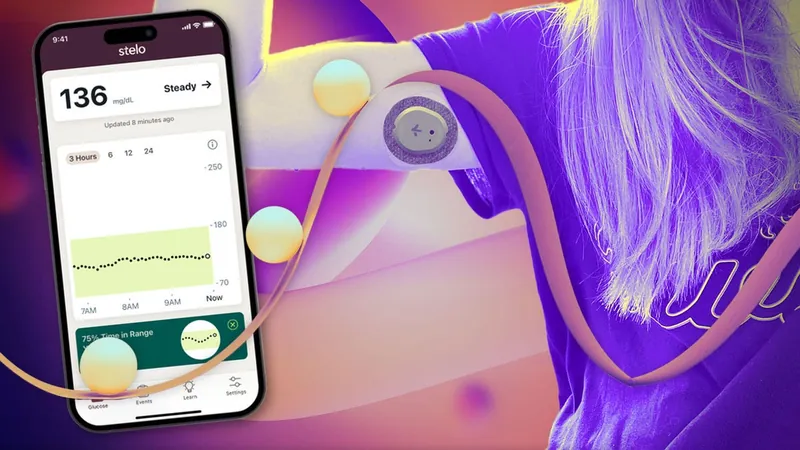
Groundbreaking Technology from NUS Researchers Promises to Revolutionize Cancer Diagnostics!
2024-09-30
Groundbreaking Technology from NUS Researchers Promises to Revolutionize Cancer Diagnostics!
A remarkable breakthrough at the National University of Singapore (NUS) could change the landscape of cancer diagnostics forever! A team led by Associate Professors Shao Huilin and Brian Lim from the NUS Institute for Health Innovation & Technology (iHealthtech) has unveiled a pioneering approach to mapping complex protein interactions within cells utilizing cutting-edge DNA barcoding technology.
Named TETRIS (Targeted Encyclopedia of Two-dimensional Reactions In Cells), this innovative tool excels at identifying and quantifying multiple protein interactions in sizeable assemblies. By intricately detailing the complex interactions among proteins found in tumor cells, TETRIS reveals critical molecular mechanisms that contribute to the progression of cancer. This technology allows for precise cancer diagnostics, enabling rapid sub-typing of various cancer forms and facilitating the detection of aggressive types within mere hours—a feat previously thought impossible!
What’s more, TETRIS is not just a diagnostic marvel; it holds the potential to personalize treatment based on protein interactions, thereby allowing tailored therapeutic strategies for individual patients. Identifying specific proteins that drive cancer growth can lead to the development of targeted therapies, significantly enhancing patient outcomes.
Published in the esteemed journal Nature Biomedical Engineering on June 19, 2024, this study was pioneered by NUS research fellows Dr. Liu Yu and Dr. Noah Sundah, who are key contributors to this breakthrough.
Decoding the Language of Proteins: A New Era in Cancer Research
Proteins are the fundamental building blocks of life and play pivotal roles in virtually every biological process. The intricate dance of protein interactions is essential for understanding health and disease. Traditional methods for studying these interactions have notable limitations, frequently yielding false results or failing to provide comprehensive interactions. The prevalent yeast-two hybrid assays and mass spectrometry often fall short, particularly in clinical settings, where understanding higher-order protein interactions is crucial.
The researchers at NUS, inspired by DNA nanotechnology, have crafted TETRIS to overcome these challenges. As Associate Professor Shao Huilin notes, 'DNA serves as a programmable material capable of encoding detailed information, enabling sophisticated interaction maps at the nanometer scale.'
TETRIS employs hybrid molecular structures that function like smart encoders, mapping protein interactions directly from patient samples. Each encoder is linked to a unique DNA barcode, allowing for the real-time capture of interactions. When proteins bind together, their barcodes merge, creating a visible chain of interactions that can be decoded by advanced algorithms, much like tracking attendees at a conference networking event.
A Game-Changer for Clinical Applications
One of TETRIS's standout capabilities is performing on-site encoding and decoding of protein interactions directly on clinical samples. In initial tests with human breast cancer biopsies, TETRIS has successfully diagnosed cancer subtypes and elucidated aggressive protein interactions associated with the disease.
This transformative technology offers a more insightful view of the molecular foundations of cancer—an invaluable asset for doctors striving to make informed, individualized clinical decisions. TETRIS is designed to be scalable and adaptable, meaning it can quickly analyze numerous samples, seamlessly integrating into existing laboratory workflows without disruption. Imagine receiving rapid results in a doctor's office, hastening treatment decisions through minimally invasive procedures like fine-needle aspiration!
Looking ahead, the researchers are enthusiastic about extending TETRIS's applications to other cancer types and neurological disorders, paving the way for cutting-edge diagnostic tools and innovative therapies. With two patents filed, there are high hopes for commercializing this groundbreaking technology.
Prepare for a future where cancer diagnostics are not just quick but also astonishingly accurate! Stay tuned as your healthcare may soon be revolutionized by this remarkable advancement from the NUS team!



 Brasil (PT)
Brasil (PT)
 Canada (EN)
Canada (EN)
 Chile (ES)
Chile (ES)
 España (ES)
España (ES)
 France (FR)
France (FR)
 Hong Kong (EN)
Hong Kong (EN)
 Italia (IT)
Italia (IT)
 日本 (JA)
日本 (JA)
 Magyarország (HU)
Magyarország (HU)
 Norge (NO)
Norge (NO)
 Polska (PL)
Polska (PL)
 Schweiz (DE)
Schweiz (DE)
 Singapore (EN)
Singapore (EN)
 Sverige (SV)
Sverige (SV)
 Suomi (FI)
Suomi (FI)
 Türkiye (TR)
Türkiye (TR)